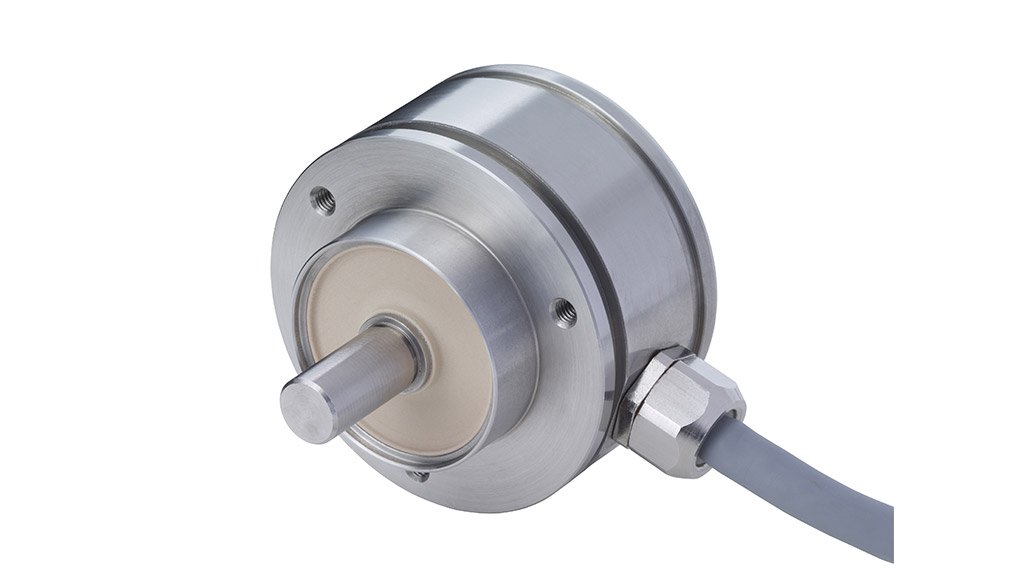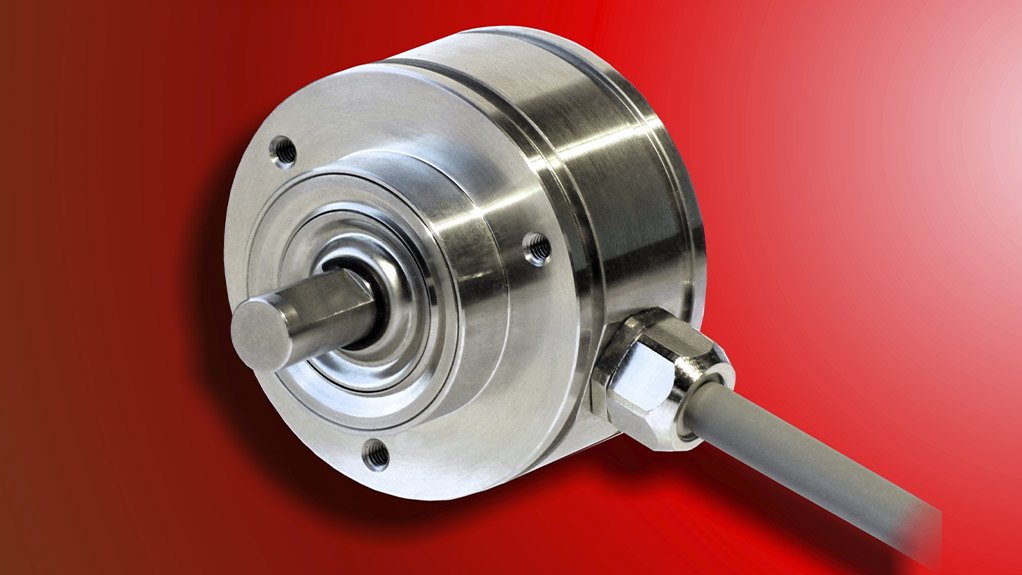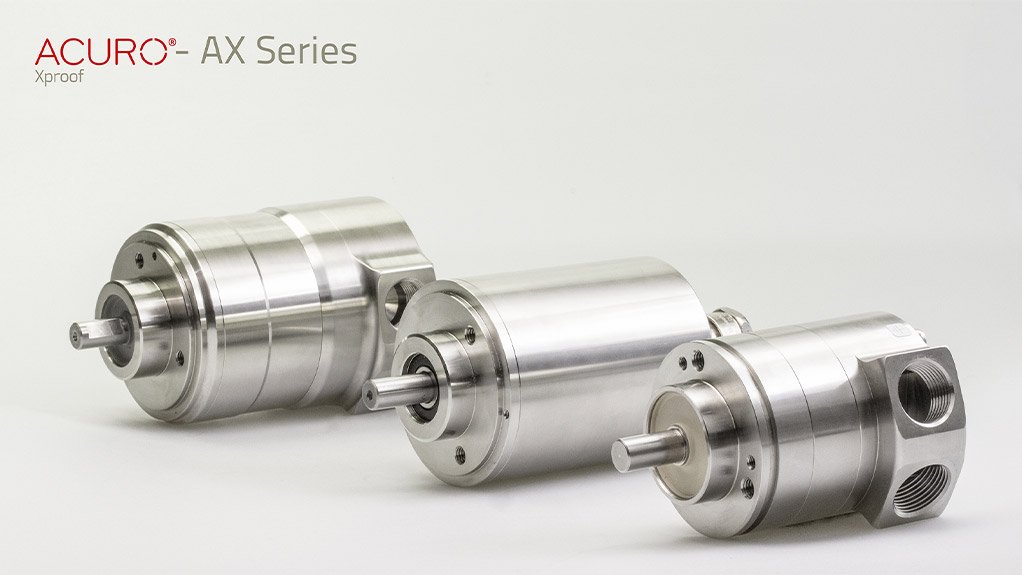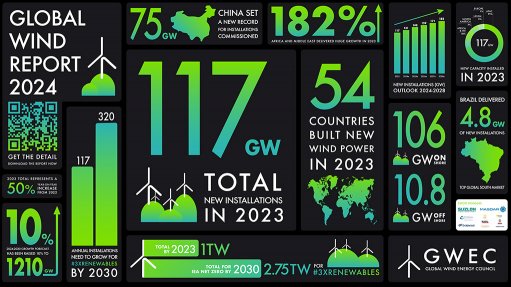Increasing Importance Of Sensors In Construction Machinery
This article has been supplied as a media statement and is not written by Creamer Media. It may be available only for a limited time on this website.
The role of sensor technology will become increasingly important in construction equipment, with encoders being used for positioning, angular, speed and length measurements in a variety of applications.
Traditionally, modern construction machinery is controlled and moved predominantly by hydraulic systems, which means that electronics and control technologies have played only a minor role in many applications. This is changing with safety-relevant aspects and driver-assist functions now setting the stage.
Gerry Bryant, managing director of leading sensor specialist Countapulse Controls, says that it has become obvious over time that the role of sensor technology will become increasingly important in construction equipment.
“Machinery deployed in these industry sectors are subjected to harsh operating conditions including varying climatic conditions, long working hours and exposure to dust, dirt and liquids. This means the demand on sensors is often extreme requiring robustness and a high degree of protection,” Bryant says.
Commenting on typical applications, he says encoders are used for positioning, angular, speed and length measurements in construction machinery applications, and assume tasks that facilitate the driver’s work and enhance productivity.
Examples include straight-to-the-point positioning of loads for hoisting equipment or restricting work zones in order to protect against collisions. Another classic example is where the devices are used in safety-relevant functions such as providing warning signals to the driver as soon as the machine enters a critical situation. A classic example of this would be where excessive loads could cause hoisting equipment (hoisting cranes, excavators) to tilt.
Agricultural and forestry machine applications use encoders to facilitate automation of many applications, making work significantly easier and increasing productivity. This could include speed-controlled sowing in agriculture right through to automated measuring of tree trunks. Automated processes that increase productivity in agriculture are becoming more and more sophisticated using satellite-controlled systems.
Bryant says that encoders used in construction equipment prove their capabilities under extremely harsh conditions by providing reliable feedback on the positioning, excursion angles or speeds.
The Hengstler range of robust encoders, available from Countapulse Controls, has a proven track record in this industry sector with devices completely free from sliding contacts ensuring high reliability and longevity.
Programmable absolute encoders do not require any re-adjustment as compared to similar technology products such as potentiometers which are adversely affected by temperature fluctuations and wear and tear. In addition, encoders offer full 360° scanning capability facilitating accurate feedback over a full turn or even several turns. Multiturn versions make it possible to read the exact number of turns at any time, even after voltage drops or complete power failures.
Encoders used in these applications must meet the essential technical requirements which include a high degree of protection, wide temperature range, high shock and vibration resistance, high resistance to water and humidity, as well as high load resistance of the shaft.
Encoders should provide protection that meets IP67 ratings or even IP69 ratings. A temperature range extending from minus 40°C to 100°C ensures reliable operation under harsh environmental conditions, such as direct exposure to sunlight and fluctuating temperatures. To prevent water condensate caused by internal heating and cooling phases, the enclosure should be specifically sealed.
Shock resistance varies depending on the application, but should be 1,000m/s2 minimum and vibration resistance should be 100m/s2 minimum. Since construction equipment is often cleaned using steam or high-pressure washers, high resistance to compressed water is great importance.
With its “Heavy Duty” product range, Hengstler offers suitable encoders (HSDxx, HDxx, ARxx) which meet all these requirements. Extremely high mechanical ruggedness, for example, is achieved by using a state-of-the-art opto-asic and coding disk made of plastic instead of the common glass type, which may break under extreme load conditions.
This Hengstler range of encoders is also available with a stainless-steel enclosure rated to NEMA 4x and 6P with double sealing, ensuring reliable operation in environments that require high resistance to high-pressure washers or corrosive chemicals.
Encoder types Hengstler HSDxx and HDxx are intrinsically safe variants and can be used with the appropriate IS barrier, certified according to ATEX EEx ia IIB T4. This makes them suitable for applications in corrosive atmospheres or applications requiring high resistance to splash and surge water.
Hengstler offers another extremely rugged range with its magnetic encoder series. The Hengstler AR-XX features not only a particularly rugged enclosure, but also generously dimensioned self-contained ball bearings, making it resistant to high mechanical stresses and even high axial and radial forces. 12-bit resolution allows the highest acceleration rates as well as underwater operation.
All products are electrically compatible with standard encoders and available with the common interface types (SSI, BiSS, CANopen, analog or parallel).
Bryant says that rugged technologies make it easier for electronic components to enter and become established in the field of construction equipment. They also respond to the requirements for high safety, productivity and operator convenience.
Comments
Press Office
Announcements
What's On
Subscribe to improve your user experience...
Option 1 (equivalent of R125 a month):
Receive a weekly copy of Creamer Media's Engineering News & Mining Weekly magazine
(print copy for those in South Africa and e-magazine for those outside of South Africa)
Receive daily email newsletters
Access to full search results
Access archive of magazine back copies
Access to Projects in Progress
Access to ONE Research Report of your choice in PDF format
Option 2 (equivalent of R375 a month):
All benefits from Option 1
PLUS
Access to Creamer Media's Research Channel Africa for ALL Research Reports, in PDF format, on various industrial and mining sectors
including Electricity; Water; Energy Transition; Hydrogen; Roads, Rail and Ports; Coal; Gold; Platinum; Battery Metals; etc.
Already a subscriber?
Forgotten your password?
Receive weekly copy of Creamer Media's Engineering News & Mining Weekly magazine (print copy for those in South Africa and e-magazine for those outside of South Africa)
➕
Recieve daily email newsletters
➕
Access to full search results
➕
Access archive of magazine back copies
➕
Access to Projects in Progress
➕
Access to ONE Research Report of your choice in PDF format
RESEARCH CHANNEL AFRICA
R4500 (equivalent of R375 a month)
SUBSCRIBEAll benefits from Option 1
➕
Access to Creamer Media's Research Channel Africa for ALL Research Reports on various industrial and mining sectors, in PDF format, including on:
Electricity
➕
Water
➕
Energy Transition
➕
Hydrogen
➕
Roads, Rail and Ports
➕
Coal
➕
Gold
➕
Platinum
➕
Battery Metals
➕
etc.
Receive all benefits from Option 1 or Option 2 delivered to numerous people at your company
➕
Multiple User names and Passwords for simultaneous log-ins
➕
Intranet integration access to all in your organisation

























